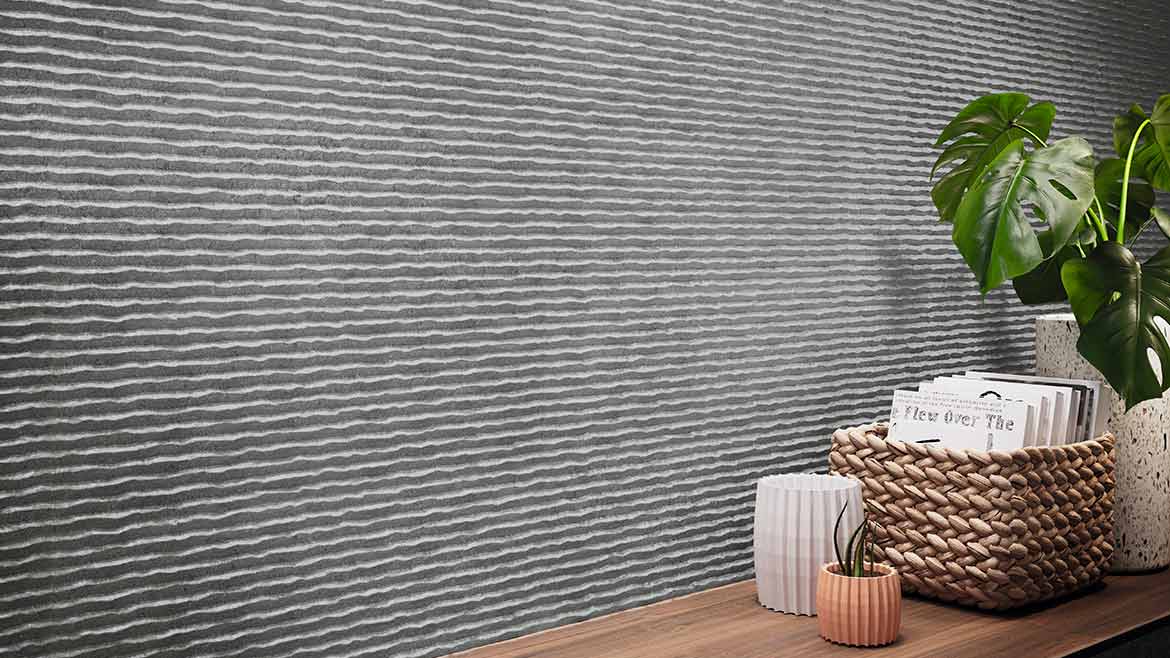While colors, sizes and shapes have always played a factor when selecting the appropriate tile for a design, now there are more texture and surface finishes available than ever before to consider as well. Technology has allowed for more defined veining and grain looks for stone- and wood-look tiles, and texture can range from a subtle sheen or ribbing to a raised three-dimensional effect.
“Although the concept of porcelain tile emulating wood, marble and stone has been around for over a decade, Italian companies continue to challenge themselves,” said Ceramics of Italy. “Many have developed proprietary techniques to make their collections look and feel like the real thing while others play with the characteristics of natural materials to create high-impact designs that are completely unique.”
Tile of Spain agrees tile collections resembling natural material remain a popular design option. “As we continue to deepen our relationship with nature, we seek to fill our interiors with elements reminiscent of the great outdoors,” said the association. “In this trend, ceramic surfaces bring us back to basics with finishes inspired by wood grain, natural stone and organic textiles. By seeking out tiles embellished with textures, metallic effects and intricate patterns, we can bring surfaces to life and create optical illusions. Similarly, you can specify different formats -- ranging from high-gloss to matte -- offering a unique set of sensations and defined style.”
According to Ceramics of Italy, brick was one of the most popular formats in Italian tile the past year. “Its small size conjures the feeling of something handmade while also serving as a module for creating wholly unique compositions,” said the association. “They can be stacked horizontally or vertically to create monochromatic environments with a bit of texture or mixed with different colors to create myriad patterns like stripes, chevron and herringbone. Some collections also offer various finishes and intense chromatic variations, so even if specified in a single color, it generates visual interest for walls and furnishings.”
Shading is also a critical component to creating a design. “With the preference for more demure designs, shading becomes vitally important,” said Tile of Spain. “The simplest and most effective way to manipulate shade is through texture. Collections featuring hypnotic surfaces will offer spaces a unique sensory experience full of depth and interest.”





















